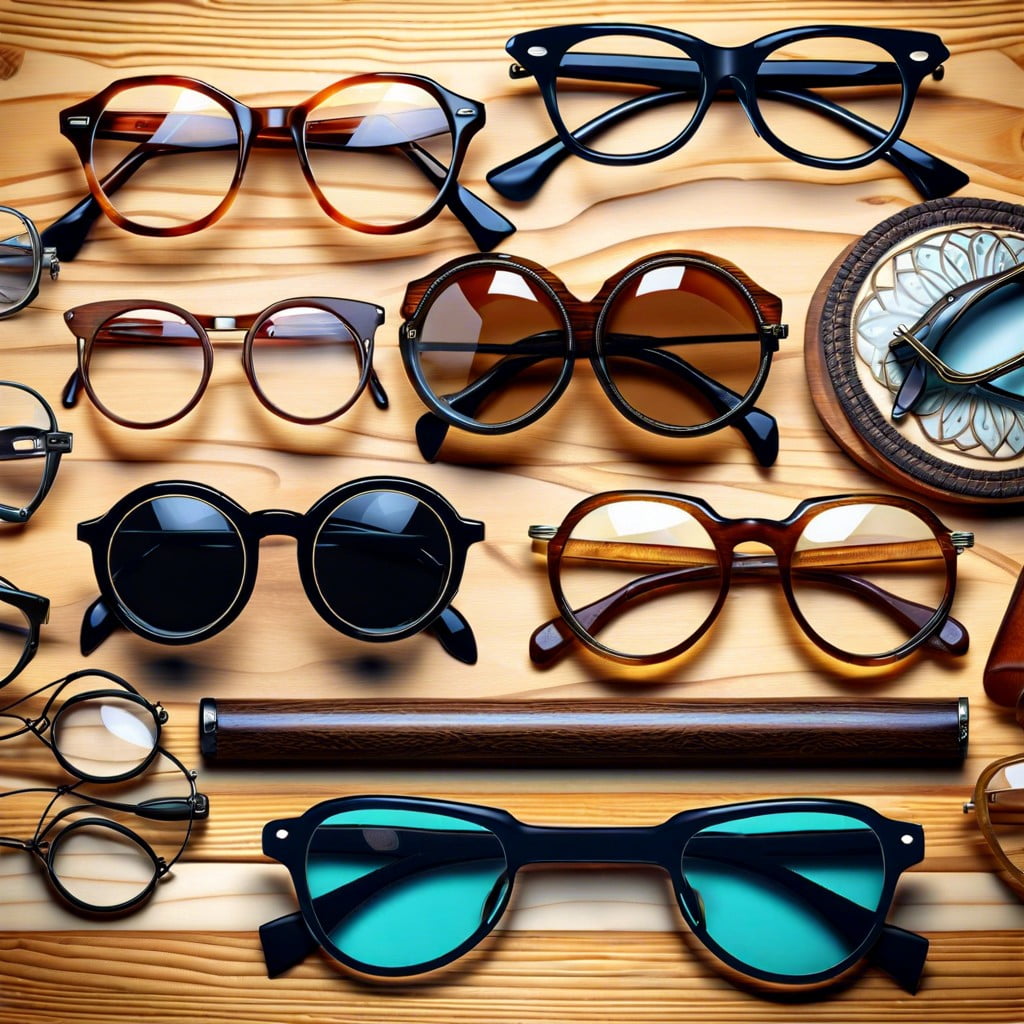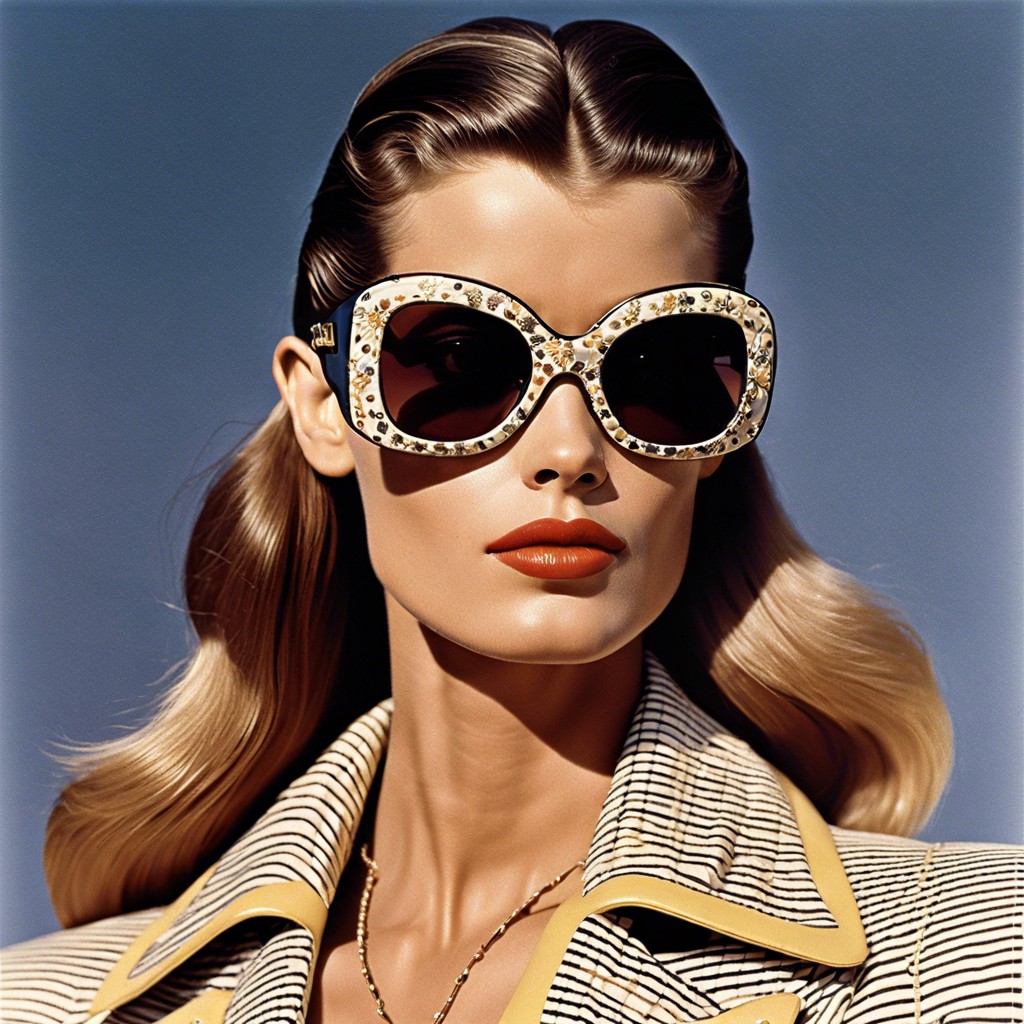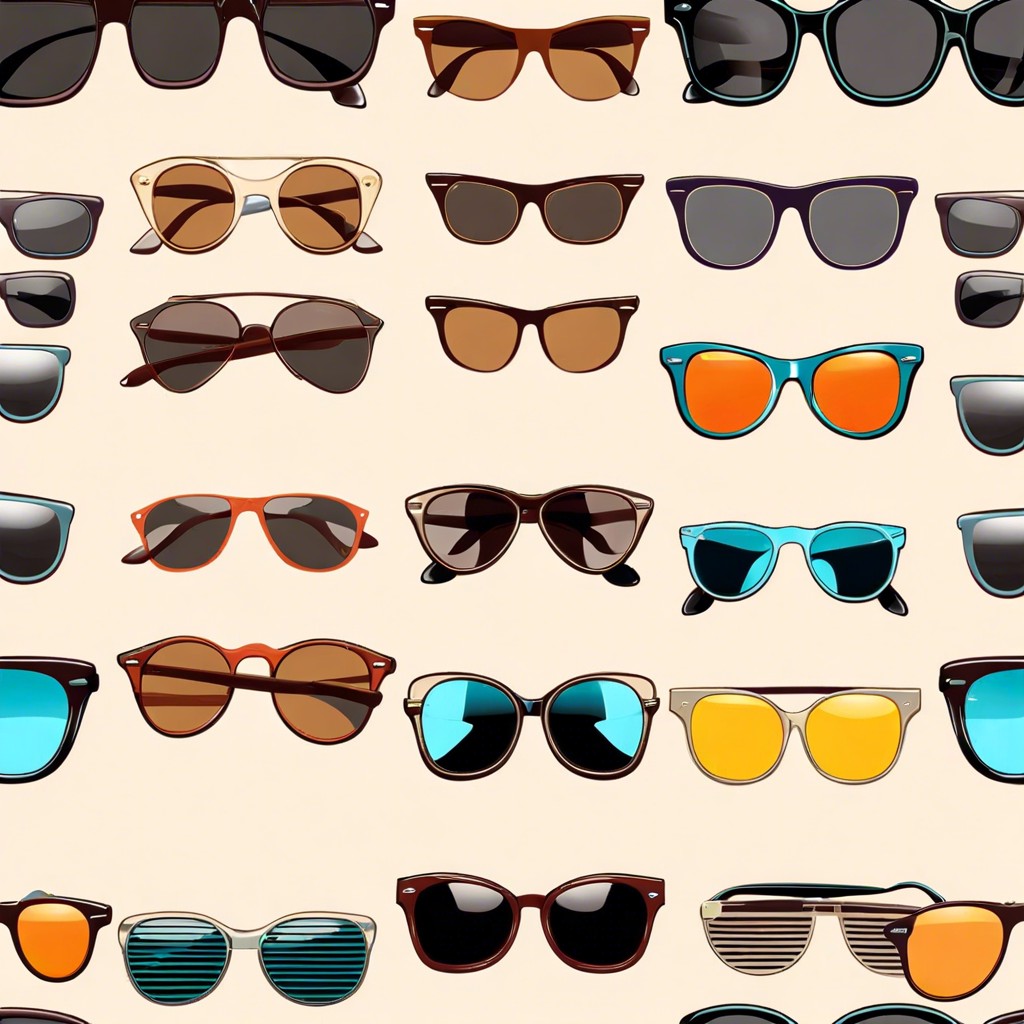Last updated on
Learn how to identify and select high-quality vintage glasses with practical tips for making informed purchases.
Key takeaways:
- Vintage glasses reflect fashion trends and technology of different eras.
- Design elements and materials indicate the age of vintage glasses.
- Consider authenticity, condition, size, and valuation when buying vintage glasses.
- Vintage eyewear has a cultural impact and is often worn by fashion influencers.
- Vintage glasses carry personal significance and stories from the past.
Understanding Vintage Eyeglasses

Vintage eyeglasses encompass a wide array of styles and designs, reflecting the fashion trends and technological advancements of their respective eras. Characterized by their age, generally at least 20 to 30 years old, these frames offer a glimpse into the past and showcase the craftsmanship of earlier times. They may be categorized by decade, with each period displaying unique features such as the cat-eye shapes popular in the 1950s or the oversized frames of the 1970s. Materials also play a crucial role, with earlier frames often made from metals or celluloid, while later designs incorporated plastics. Collectors and fashion enthusiasts prize vintage glasses not just for their aesthetic appeal but also for their historical significance and the stories they carry. To understand vintage eyewear, one must consider the context in which it was made, the materials used, and the iconic styles that define each era.
Evolution of Vintage Glasses Designs

The origins of eyeglasses trace back to thirteenth-century Italy, with simple designs consisting of riveted glass lenses. As time progressed, the 18th century introduced the sidearm, shifting eyewear from a hand-held accessory to a wearable item. By the Victorian era, elaborate embellishments and a variety of shapes came into fashion, with the pince-nez and lorgnettes gaining popularity among the elite.
The 1920s to 1930s saw a surge in creativity, with art deco influences that led to geometric shapes and vibrant colors, while the material shifted from metal to the early use of plastic in frames. The post-war era brought about the classic horn-rimmed and cat-eye glasses, capturing the optimistic spirit of the 1950s.
Moving into the 1960s and 1970s, eyewear transformed with the cultural landscape, reflecting the rise of counterculture movements with bold, oversized designs. Mod fashion introduced round and square shapes, emphasizing individual expression.
Each decade thereafter continued to redefine vintage eyewear, including the minimalist trends of the 1990s with smaller, sleeker frame designs. These shifting aesthetics not only represent the evolving fashion ideals of their times but also the advancements in materials and lens technology.
Distinguishing Features of Vintage Glasses
Vintage glasses can often be identified by their distinctive design elements that reflect the fashion and technology of their respective eras.
Cat-eye frames, which grew in popularity in the 1950s and 1960s, are recognized by their upswept angles and embellishments such as rhinestones. Browline glasses, introduced in the late 1940s, feature a prominent upper frame that runs across the eyebrows and are often made of a combination of metal and plastic.
Materials can also indicate the age of a pair of glasses. Celluloid, an early type of plastic, was frequently used until the mid-20th century when it was largely replaced by more durable and less flammable materials like acetate and nylon.
Lens shapes and sizes have evolved over time, with round lenses typical of the early 20th century, while the 1970s saw an increase in oversized frames. The presence of glass lenses, as opposed to modern polycarbonate or high-index plastics, can also suggest an older origin.
Hinges and screws of vintage glasses were often more elaborate and less standardized than modern eyewear, with some featuring unique designs or elaborate filigree.
Finally, markings are key in vintage eyewear identification; designer signatures, model numbers, and even patent marks can be extremely revealing. Collectors and enthusiasts look for these identifiers inside the temples or on the bridge to authenticate the period of the glasses.
Considerations When Buying Vintage Eyeglasses
When selecting vintage eyeglasses, authenticity is paramount. Look for hallmark features like stamps, engravings, or brand logos that verify their period of manufacture. Condition plays a crucial role; check for structural soundness, such as intact hinges and lenses free of significant scratches. Ensure that the frame materials align with the era’s typical resources, such as Bakelite in early 20th century pairs.
Size must not be overlooked. Unlike contemporary eyewear, vintage sizes can be smaller. Ensure a comfortable fit – the frames should not pinch your nose or pressure the temples. Prescription lenses may need updating, so confirm that the frames can withstand the installation of new lenses without damage.
Proper valuation is also essential. Compare prices across different sellers and consider the rarity and desirability of the style. Vintage glasses that match the fashion trends of the day may carry a premium.
Lastly, consider whether you want eyeglasses for daily wear or special occasions, as this might influence your choice in terms of durability and style.
Cultural Impact of Vintage Eyewear
Vintage eyewear has become a symbol of timelessness within fashion circles. Its appeal crosses generational boundaries and often serves as an homage to style icons of bygone eras. For example, cat-eye glasses evoke the glamour of the 1950s, while large, round frames mirror the free-spirited vibe of the 1960s. Celebrities and fashion influencers frequently incorporate vintage frames into modern looks, highlighting the cyclical nature of style trends.
Moreover, these glasses are more than aesthetic artifacts; they are historical touchstones that reflect societal changes, from the adoption of new materials to shifts in social mores. Acetate and tortoiseshell designs, for instance, speak to the technological innovations of the 20th century, while the slender metal frames of the early 1900s point to an era of more restrained fashion norms.
In cinema and literature, vintage glasses often emerge as key props in setting the context or developing a character. A pair of rounded spectacles might denote the studiousness of a character or a particular penchant for retro flair. The cultural impact is such that some styles are forever linked with certain personalities or fictional characters, reinforcing the intrinsic link between personal style and identity.
Collectors and enthusiasts cherish these frames, not only for their visual appeal but for the stories they carry and the personal connections they embody. Often, vintage eyewear carries the weight of personal histories, becoming a form of wearable nostalgia, thus enriching the personal significance of each pair.
Related:




